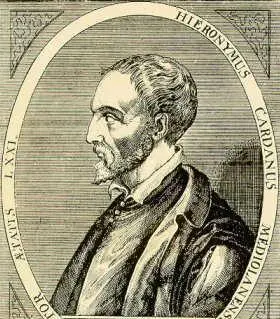Kuminga truly does not want to return to the Warriors! Only two options remain: a $7.9 million short-term deal or a huge risk
On August 26th Beijing time, according to renowned reporter Siegel, negotiations between Kuminga and the Warriors remain deadlocked. As September approaches, Kuminga faces only two choices: first, accept the Warriors' two-year $45 million contract, with the second year being a team option and no trade restrictions; second, accept the $7.9 million qualifying offer for the 2025-26 season.


The Warriors believe this two-year offer represents a “fair valuation” for Kuminga — allowing him to continue growing alongside the team's core while offering tangible benefits: not only securing a higher guaranteed salary immediately but also temporarily breaking the stalemate and leaving room for potential trades before next February’s deadline.
In theory, this proposal allows both sides to get what they want for the 2025-26 season. However, Kuminga and his team don’t fully agree — they feel accepting this deal means giving up the little remaining “leverage” they have: signing a two-year contract would prevent Kuminga from controlling which team he might be traded to, which to him feels like completely losing control over his contract.
But on the other hand, if he chooses the qualifying offer, what control does he really gain?

Accepting the $7.9 million one-year qualifying offer essentially means Kuminga and his team admit there are “no other options.” This carries significant risks:
Losing nearly $10 million in income compared to the average annual salary of the two-year $45 million deal;
Potentially suffering injuries while playing under the qualifying offer;
His role on the court might be further diminished.
These risks not only affect other teams’ interest in him but also send a negative message — the label of “even his own team won’t offer a long-term deal” could harm his future market value.
The more crucial question is: what is the fundamental difference between the two-year contract and the qualifying offer? Since he could be traded by the Warriors regardless, wouldn’t accepting the higher salary, seizing the current opportunity, and accepting the reality of a possible team change be the more reasonable choice for Kuminga?
Indeed, accepting the qualifying offer would make him a fully unrestricted free agent in 2026, able to choose his next team; but even if he signs the two-year contract, if the Warriors don’t trade him during the contract and exercise the “team option” in the second year, Kuminga still has a chance to become a free agent next year.
The only reason Kuminga has rejected this contract so far is that he “genuinely does not want to return to the Warriors.”If the Warriors want to win him back and reach a settlement, their two-year proposal must first address “Kuminga’s core demands” — but at present, this offer seems almost impossible to adjust.
The Warriors have held their position firmly so far, and no other team in the league has been able to force the Warriors to budge by offering an “invitation contract.” However,from another perspective, it might be reasonable for the Warriors to make minor concessions to break the deadlock — for example, changing the “team option” to a “player option.” Would this make Kuminga more willing to accept the two-year $45 million deal?
If changed to a player option, the Warriors would still retain the right to trade Kuminga; for Kuminga, this contract would essentially be similar to a “one-year deal,” since he could opt out during next year’s offseason. Ideally, both sides could resolve their differences through communication, allowing Kuminga to remain a young core player for the Warriors.
But the reality is, time is running out. The Warriors want to settle this quickly, especially with September already here — training camp is approaching, and the team needs to finalize its roster soon.

Unless the Warriors receive an “irresistible sign-and-trade offer” (which currently seems very unlikely), Kuminga will most likely remain with the Warriors for the 2025-26 season.The only question is whether he will sign a new contract or accept the qualifying offer.
Even after receiving the Warriors’ two-year offer, Kuminga has repeatedly expressed that he is “content to stay next season on the qualifying offer.” Saying he “leans toward accepting the qualifying offer” is not false, but equally, saying he has “completely closed the door on signing a long-term deal with the Warriors” is inaccurate — he just wants to feel “respected” rather than treated like a “pawn on the chessboard.”
This is exactly why the negotiations have stalled: accepting a contract with a team option and giving up trade veto rights means relinquishing complete control over his future.
Currently, there is still time for both sides to renegotiate the terms of the existing proposal, but the key question remains: is the Warriors willing to compromise?
For the Warriors, resolving Kuminga’s contract issue is urgent — this deadlock has already impacted the signing process of other free agents on the team. Since early July, the Warriors had agreed with players like Horford and Melton, but due to the uncertainty around Kuminga’s extension, these players have yet to officially sign.
With training camp drawing near, these players need to complete their contracts for the 2025-26 season soon to integrate into the team’s preparations.
It is widely believed that after September 1 passes, Kuminga’s short-term future will become clearer — after all, the Warriors prefer to find a solution in early September rather than wait until October 1 (the qualifying offer deadline) to decide.


Wonderfulshortvideo
User basketball has posted a video.


🏆 Wemby rolls to the rim 👽 🏆


Luka wearing Irving 5s🤞🤞


Art BY kyrie Irving 📌📌📌


Art BY kyrie 📌


User PANDATV has posted a video.


VJ Edgecombe goes coast-to-coast for the slam 😤








 Links
Links
 Contact
Contact
 App
App


